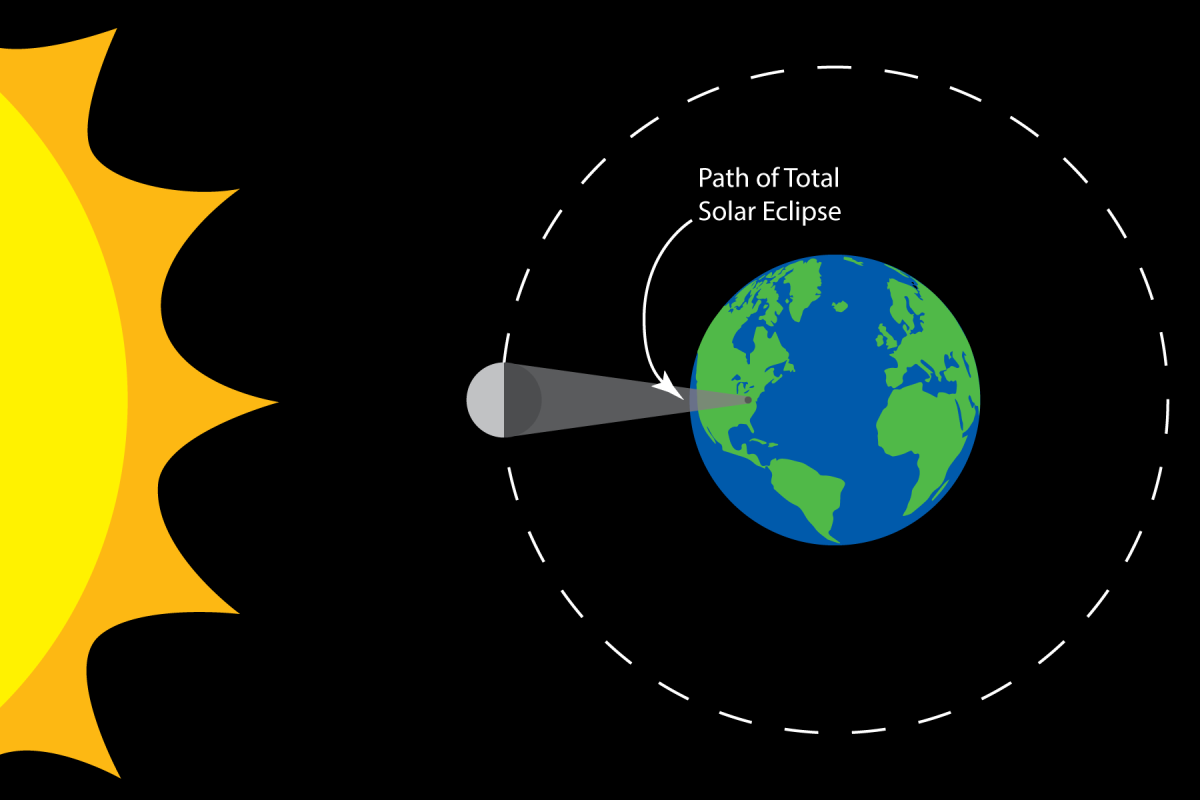Spring has arrived, the sun is out, and we start to thaw out from the winter. Suddenly, the sky goes dark and stars shine in the middle of the day. A cool breeze sweeps by and birds begin to sing. It’s as if night has fallen in a matter of seconds.
Millions of Americans may experience this on April 8 as a total solar eclipse will be visible from parts of the United States, Canada and Mexico. The path of totality, which occurs when the sun is completely covered by the moon, will sweep across the United States from Texas to Maine, casting the moon’s shadow over parts of Ohio, Pennsylvania, New York and other states.
The solar eclipse will last four minutes in some places and won’t be visible from the contiguous United States until 2044. There will be another solar eclipse in 2026, but it will only be visible in Greenland, Iceland and Spain.
When planning to go and see the solar eclipse there’s some important information to be aware of:
Most importantly, travel to somewhere in the path of totality. Even the smallest part of the sun not covered by the moon will overpower the eclipse. Make no mistake, the difference between even a 99% partial solar eclipse and a 100% total solar eclipse is vast, some might say astronomical.
Make sure to leave extra time for travel. Heavy traffic is likely since millions of people are within driving distance of the eclipse’s path.
Also, safety precautions are necessary for viewing the eclipse. A solar eclipse is unsafe to view with the naked eye, except during the brief period when the moon totally covers the sun. Viewing the solar eclipse through a camera lens, binoculars or a telescope is also unsafe before and after totality.
There are several methods to view the eclipse safely. The easiest method to safely view the solar eclipse is with eclipse glasses. Regular sunglasses, no matter how dark, are not sufficient eye protection, and cause permanent damage.
Be careful when choosing eclipse glasses because the American Astronomical Society has warned of fake and counterfeit eclipse glasses on sale. A reliable option are the Soluna Solar Eclipse Glasses, which are approved by NASA and the American Astronomical Society. Soluna Solar Eclipse Glasses can be purchased on Amazon.com for $15.
Another easy way to safely view the eclipse is by viewing it indirectly with a pinhole projector, which is a small opening that projects onto a nearby surface an image of the moon moving across the sun. Whatever method is used to view it, a total solar eclipse is an unforgettable experience that can only truly be understood by seeing it firsthand.





